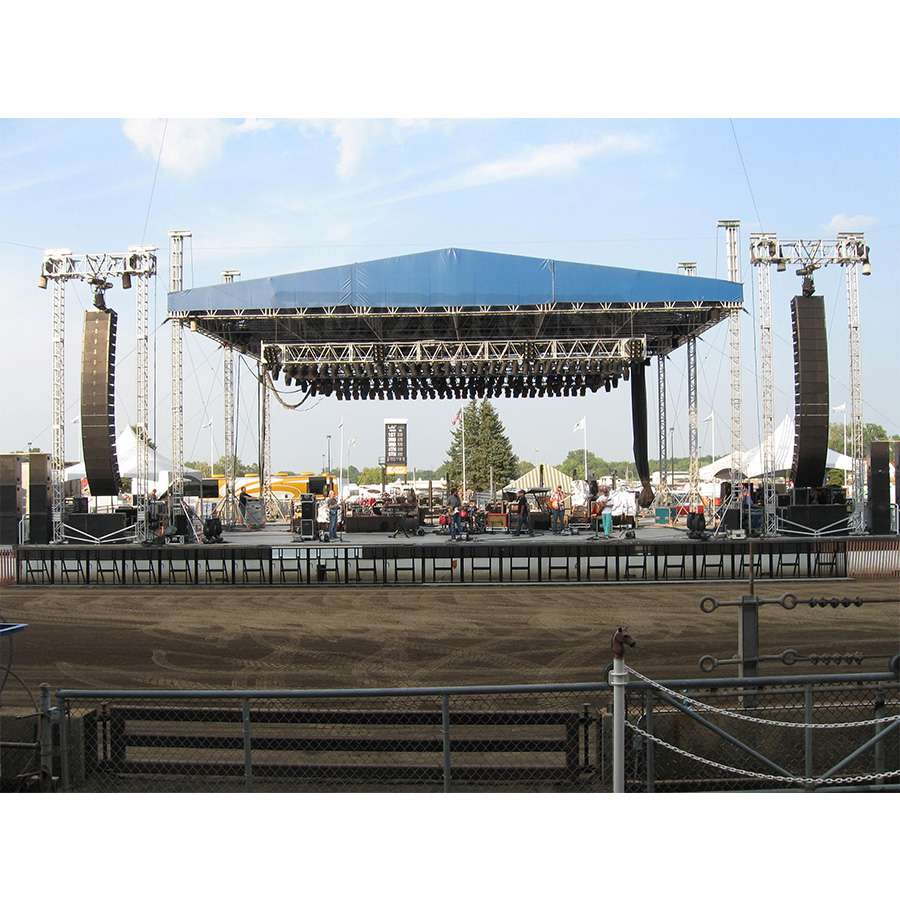
Publish Time: 2023-03-10 Origin: Site

Truss design and safety considerations are essential aspects of stage production. A well-designed and properly installed truss system is vital to ensure the safety of performers, crew, and audience members. In this article, we will discuss some important truss design and safety considerations.
Load Capacity The load capacity of the truss is one of the most critical design considerations. Truss structures must be capable of supporting the weight of lighting, sound equipment, and other staging elements safely. Load capacity depends on various factors, including the size of the truss, the material used, and the type of connection used to attach the truss to the stage or rigging point. It is essential to ensure that the truss is rated for the intended load and that the load is evenly distributed across the truss structure.
Wind Resistance Wind resistance is another critical consideration when designing a truss structure. Outdoor stages are particularly vulnerable to high winds, and a poorly designed truss system can become unstable or even collapse under strong winds. Truss structures should be designed with adequate wind resistance in mind, taking into account factors such as wind speed, wind direction, and the surface area of the truss structure.
Rigging Points Rigging points are essential components of any truss structure, and their placement is critical to ensure the safety of the truss and the performers. Rigging points must be securely attached to the truss structure and capable of supporting the intended load. It is also essential to ensure that the rigging points are located in the correct position, as an improperly placed rigging point can lead to an unbalanced load distribution or a compromised structure.
Bracing Bracing is an essential component of truss design, providing additional stability and support to the truss structure. Bracing should be installed at regular intervals, depending on the size and complexity of the truss structure. Properly installed bracing helps to prevent sagging and shifting of the truss structure, reducing the risk of collapse.
Material Selection The material used in the construction of the truss is another critical consideration. Aluminum and steel are the most common materials used in truss construction, with each material having its advantages and disadvantages. Aluminum is lightweight and resistant to corrosion, making it ideal for outdoor stages. Steel is more durable and offers higher load-bearing capacity, making it suitable for larger truss structures.
Inspection and Maintenance Regular inspection and maintenance of the truss structure are critical to ensure its safety and longevity. Truss structures should be inspected for signs of damage or wear, such as cracks, rust, or bent sections. Regular cleaning and maintenance of the truss structure help to prevent corrosion and other forms of damage, extending the life of the truss system.
In conclusion, truss design and safety considerations are essential aspects of stage production. Proper design, installation, and maintenance of truss structures are critical to ensure the safety of performers, crew, and audience members. By considering factors such as load capacity, wind resistance, rigging points, bracing, material selection, and inspection and maintenance, you can ensure that your truss structure is safe, reliable, and long-lasting.
FOSHAN DRAGON STAGE
No.7,Xiaxi Industrial Area,Heshun,Nanhai District,Foshan,528241,Guangdong,China.
+86 136 3132 8997
